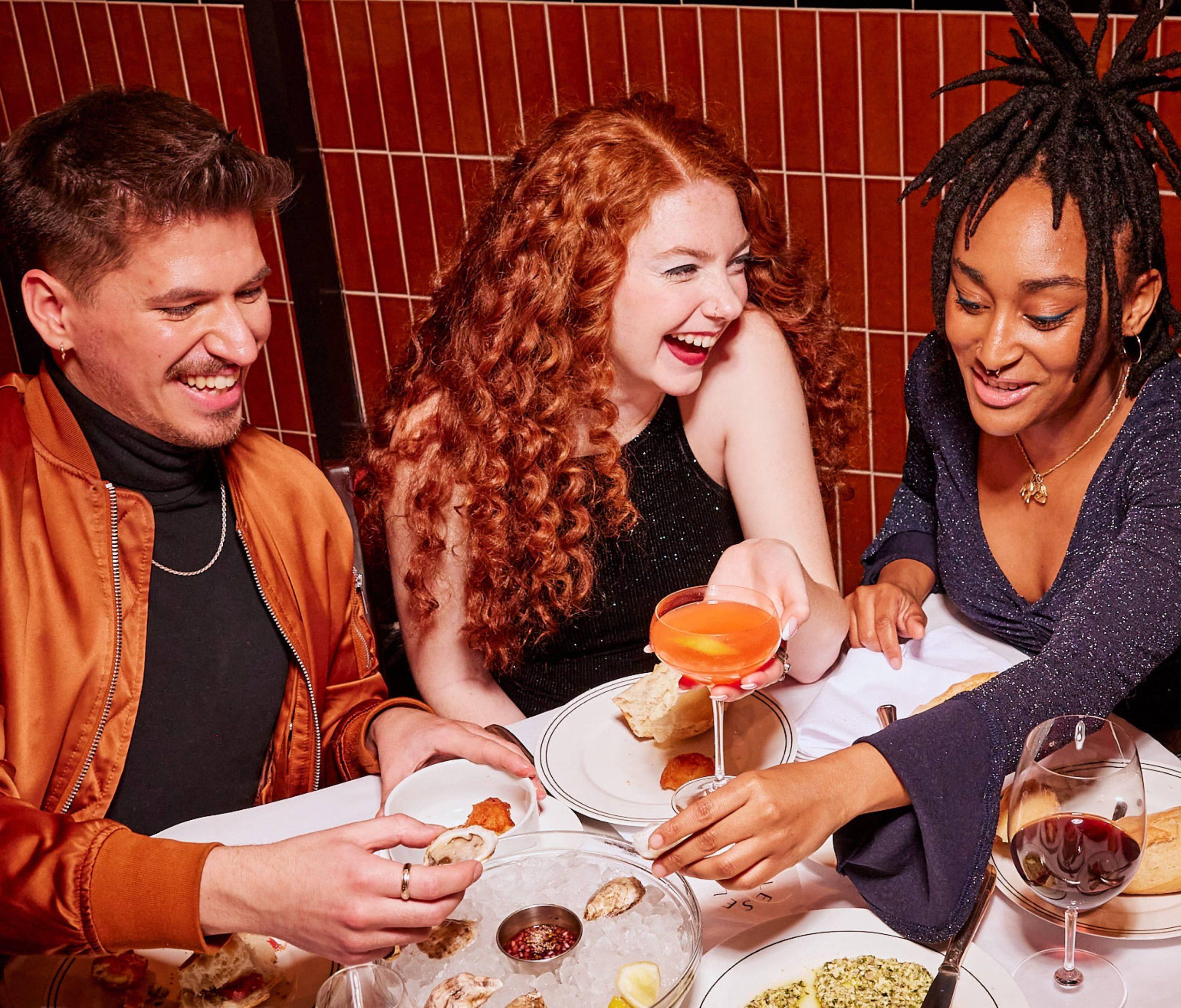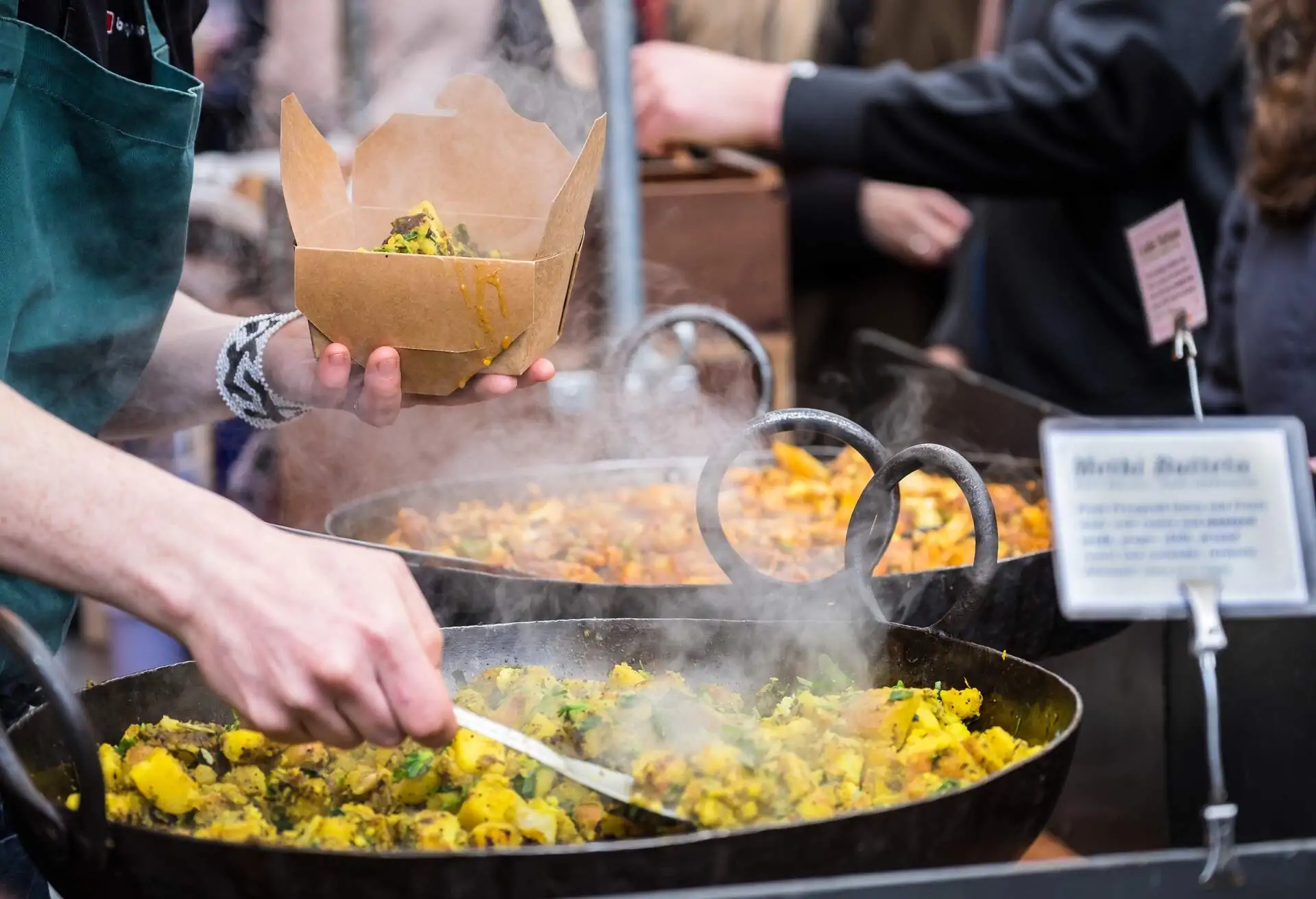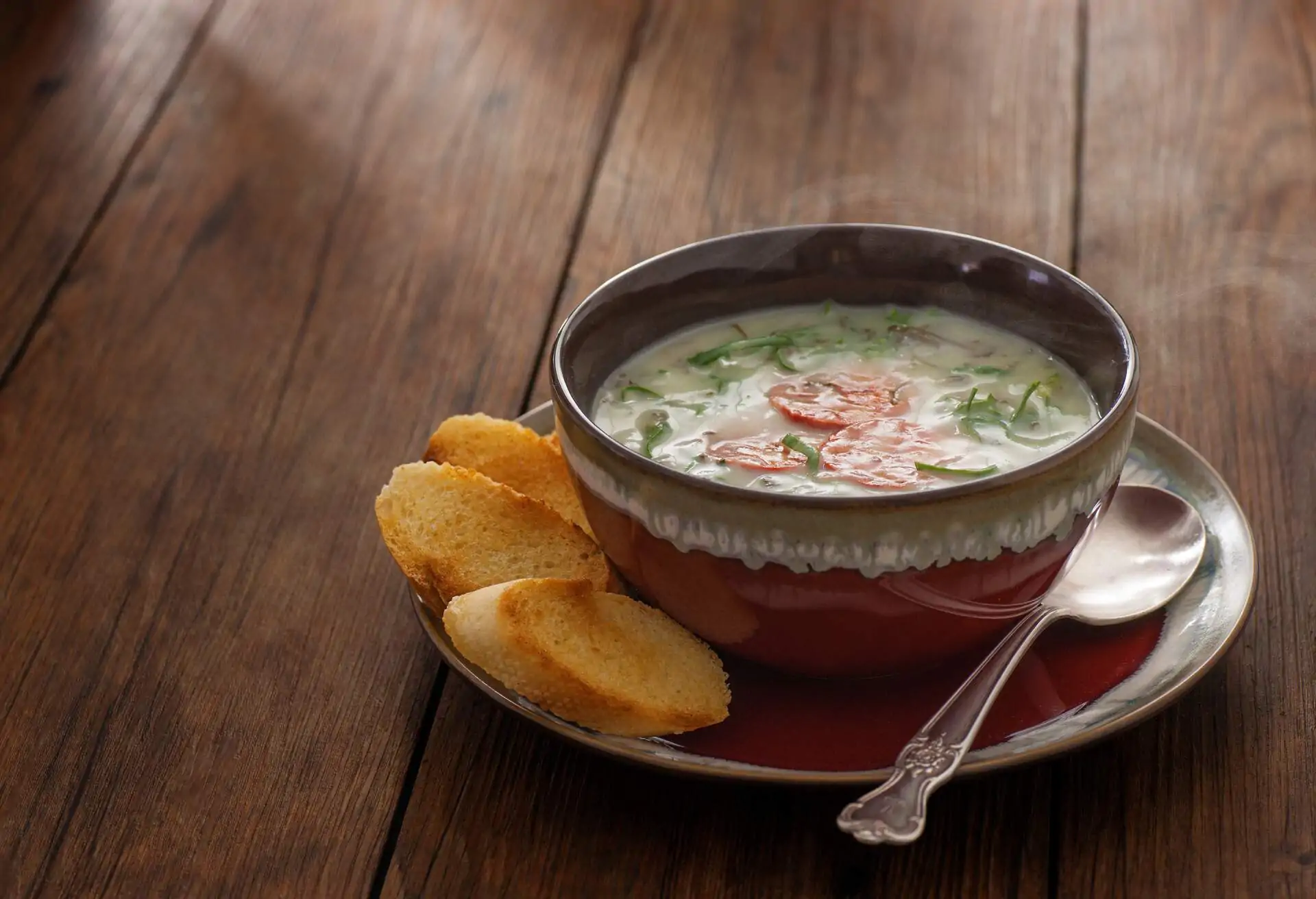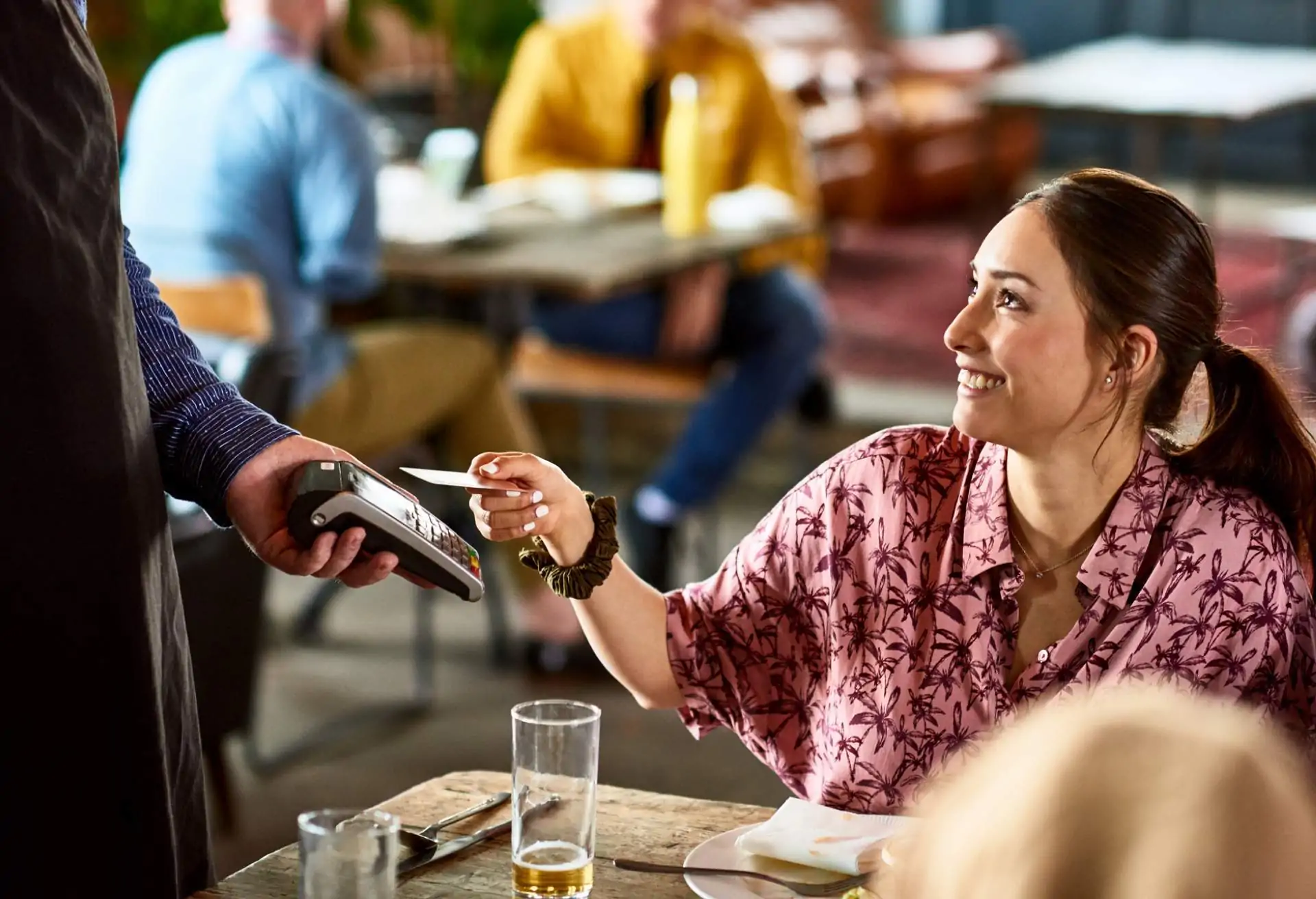Thinking of ways to test out your creations? Opening a short-term pop-up restaurant may be for you. Pop-ups let food businesses try out new ideas in rented spaces for a few days, weeks or even months. You can build excitement with fun themes and experimental menus while creating an exclusive vibe before closing up shop.
With that in mind, this guide has everything you need to know about pop-up restaurants. From understanding the pros and cons to how to open one, get the lowdown on all things pop-up.
What is a pop-up restaurant?
A pop-up restaurant is a temporary dining venue that pops up in an unconventional space for a limited time before disappearing or “popping down.” Unlike traditional restaurants, pop-ups are transient by nature, operating anywhere from a single day to a few weeks out of spaces that wouldn’t normally host a restaurant, like vacant buildings, trucks and other unconventional places.
The ephemeral quality adds to the experience with unique concepts that offer surprise menus not found on the typical food scene. Their fleetingness also allows new entrepreneurs to experiment with creative ideas without lengthy leases or huge overhead costs. Once the pop-up’s short run is over, the space goes back to its usual purpose as the pop-up pops away.
Pros and cons of a pop-up restaurant
Opening a pop-up restaurant can be an exciting venture for restaurateurs, but is it the right fit for achieving your goals? Let’s explore some pros and cons.
Pros
Test out new concepts
The nature of pop-ups allows you to experiment with adventurous menus, themes and dining experiences without a long-term commitment to expensive leases.
Build buzz
Pop-ups are often new and exclusive, generating word-of-mouth hype and media coverage, especially if you have a novel concept or hot up-and-coming chef.
Affordable
Avoid pricey commercial leases and extensive build-outs. Pop-up spaces are rented short-term at lower costs. In some cases, successful pop-ups can go on to have their own permanent spaces.
Cons
Very temporary
While the temporary status of pop-ups can create a frenzy, it also means your branding and a potential revenue stream can disappear quickly. Not ideal for long-term business.
Lots of work
Pop-ups involve intensive planning and preparation in a compact timeframe. The workload is challenging for a short-lived event.
Unpredictable success
It’s hard to predict customer interest and recoup costs in an untested concept. Some pop-ups fail to draw enough buzz and traffic during their limited run.
How do I know if a pop-up restaurant is right for me?
How can you evaluate if a pop-up restaurant aligns with your goals? Before taking the plunge, ask yourself the following questions:
- What’s your purpose? Pop-ups work best for testing concepts, building hype or promoting a brand over monetisation. The temporary timeframe makes reliable profitability tricky. If ongoing revenue is the primary driver, a pop-up can have limitations.
- Do you embrace creativity? Nimble pop-ups thrive on inventiveness in their promotional messaging, décor, menus and more. Is your team energised by an experimental blank slate for a time-limited concept?
- Can you manage the intensity? Pop-ups mean condensed timelines for all planning, preparations, promotion and operations. It’s an exhausting sprint requiring stamina.
- Do you have a built-in audience? Having an existing diner base or social media following for promotion can make or break foot traffic for thinly resourced pop-ups.
If your goal is to have an outlet for innovation purposes and you can rally an audience for a temporary experience, a pop-up is a worthwhile adventure. If not, a longer-term brick-and-mortar spot may suit your needs better.
What are the features of a pop-up restaurant?
A pop-up restaurant’s draw comes from its distinctive experiential features that set it apart from everyday dining establishments. Pop-ups are defined by their brief quality and element of surprise, so they often forgo a traditional restaurant layout or menu, instead focusing on one highly styled concept.
Pop-ups frequently have attention-grabbing aesthetics from their setting to table presentations and the location itself — some move into a stylish concrete studio or unused warehouse for a trendy, industrial look. Others go for a playful atmosphere decking out a greenhouse with fairy lights and bold graphics to match eccentric dishes. Menus are also unexpected, zeroing in creatively on a specific cuisine or type of experimental dish.
With little long-term planning needed, pop-ups have flexibility around …
- Customised meals
- Unique themes
- Involvement of guest chefs
- Eclectic drink pairings and more
The novelty and fleeting nature pervading each intentional detail are core to making pop-ups a coveted gastro-phenomenon for those lucky diners able to experience them.

How can I open a pop-up restaurant?
Opening a pop-up restaurant takes careful planning, with a few steps key to launching your temporary dining experience.
Find a short-term space
Scout under-utilised venues like lofts, galleries, outdoor lots or storefronts for rent on a weekly or monthly basis. Space dictates the atmosphere, so choose one that matches your theme. Aim to negotiate affordable terms since it’s for a limited window.
Develop a concept
Brainstorm what will make your pop-up enticing and distinct in the market. Experiment with lesser-seen cuisines or quirky menu limitations to generate buzz even with constraints. For example, Jimmy’s BBQ Club in London has become a summer staple, albeit a temporary one. The pop-up appears during the warmer months each year, offering a six-course meal cooked over fire. Courses include interactive elements, with at least one part cooked on the Big Green Egg grills provided at each table.
Design an environment
Use decor, music, lighting and furniture rentals to transform the venue, complementing your dishes. Aim for an unexpected atmosphere, something different from what guests come to expect in a traditional restaurant setting.
Promote your pop-up
Maximise the fear of missing out (FOMO) by marketing across channels, especially through influencers and targeted digital ads. Create an email list for direct access to interested followers, and use promotions like ticket presales.
Set a short tenure
Inform the media of your exact operating timeline from day one to stoke up that all-important scarcity value. Plot out weeklong or 30-day windows if you’re confident about enticing intrigued diners, but be prepared to extend the time frame if your pop-up is wildly popular.
With creative vision, scrappy promotion and the element of surprise on your side, your pop-up can effectively delight foodies in its temporary glow.
Tips for a successful pop-up restaurant
Opening a fruitful pop-up restaurant amidst the risks and unknowns takes smart leadership, whether you’re curating an exclusive guest list or forming important partnerships.
Curate an exclusive guest list
Drive early buzz by hosting a series of soft opening nights just for influencers, media and your best customers or investors. This also allows an opportunity for feedback before the official opening takes place.
Appoint a skilled event manager
Pop-ups share similarities with large-scale private events. If the budget permits, bringing on an experienced event project manager will help to provide seamless, professional execution within cramped timelines.
Offer merchandise
On-site retail, like t-shirts, reusable cups or take-home food items, lets guests literally buy into the brand experience you’ve created. Merchandise also unlocks longer-term marketing opportunities.
Partnerships
Partnerships allow pop-ups to access a wider customer base and leverage each other’s expertise. You can expand your brand through affiliation with trusted names and ultimately drive more business and revenue.
Implement reservations
A ticketing system or reservation model creates a sense of demand, manages capacity limits and helps with upsells like pre-set menu choices. Avoid excessive walk-in wait times and keep on top of your operations.
Know when to say when
Exit at the peak of success within your predetermined tenure. Whether extending a pop-up or not, wrap operations when the energy levels are still high rather than overstaying your welcome and risking concept burnout.
Prepare for brick-and-mortar
Use the pop-up as a platform to gauge customer feedback, explore expansion opportunities, forge community connections, and prepare operations for transitioning into a permanent location.
Get clever with these less-expected strategies for pop-up prosperity and positive momentum.
What are the laws around starting a pop-up restaurant?
Launching a pop-up in the UK stirs up some key legal considerations. You’ll need to get a licence and insurance to cover your temporary operation. Register with the proper food safety bodies like the Food Standards Agency to meet hygiene regulations in your unconventional space.
Don’t forget alcohol and music licensing too through the local council. Beyond permits, comply with HMRC tax rules, and seek legal advice to ensure you cross all the t’s with regulations for your limited tenure.
As pop-ups rent spaces that aren’t typically meant for restaurants, be extra diligent with safety, from layout to equipment. Do your due diligence with costs, leases and liability as well. Staying on top of these aspects is worth it to legally sell your dishes for a short, glorious run in a top pop-up setting.
How to promote a pop-up restaurant?
Generating interest for a pop-up requires strategic promotion within a compressed timeline. Your best bet is to employ both digital and real-world marketing tactics to cut through the competitive noise.
Securing early media coverage can make a world of difference. Extending exclusive opening previews to food journalists and prominent regional chefs will help garner coveted reviews right out of the gate. It also allows time to incorporate feedback.
Geo-targeted social media advertisements enable highly localised targeting for anyone living near your pop-up. Crafting engaging digital content showcasing the pop-up experience helps convey what makes it unique. Vivid photography and video best spotlight the atmosphere and dishes — capture the vibe of your pop-up, as well as the food you sell.
Strategically located print displays around public transport and high-foot-traffic zones can spur impulse walk-ins while seeking inclusion in restaurant guides and keep the pop-up top of mind for crowds-seeking activities.
Once inside, small touches encourage diners to share their reactions, check in on social media platforms or leave a review. The social word-of-mouth from visitors who loved the experience offers invaluable authentic promotion.
With such limited time to make an impression, restaurateurs have to carefully choreograph promotion at every touchpoint for the best results.
How long should my pop-up restaurant be open for?
The ideal duration for a pop-up restaurant is usually around four weeks to capitalise on buzz without overstaying the concept’s novelty. Long enough for word-of-mouth and media attention to spread, generating the all-important fear of missing out, but not so long that interest starts fading along with the element of surprise and exclusivity.
Aim for a month to six weeks if orchestrating a special event-driven promotion like Restaurant Week or a guest chef series. Holiday festivities also present perfect moments for temporary establishments. For some, pop culture purposes, say, a movie tie-in, 10 days to two weeks fits the mould. Offbeat ideas with ultra-limited seating may only run for a single weekend.
Whatever the duration, announce a clear end date upfront to alert guests. The scarcity sparks urgency to visit, which is fundamental for a short-term business relying on hype. Ultimately, the limited tenure should match the theme and prevent the pop-up from going stale.
Successful pop-up restaurant examples
Take inspiration from restaurants and brands that have successfully created pop-ups that left a long-lasting impression.
-
- The Picture House pop-ups in Manchester and Leeds were a clever stunt by food brand Captain Birdseye, where guests uploaded photos of dishes to Instagram with a branded hashtag for free meals.
- The “Dram and Smoke” pop-up in London offers a unique Scottish dining experience. Hosted in a Vauxhall steelyard, it features a six-course tasting menu, including haggis bon bons and deep-fried Mars Bars, capturing the essence of Scottish cuisine in an urban setting.
- Noble Rot created an annual Beaujolais wine pop-up in London with guest chef Angela Hartnett, who prepared Italian fare paired with classic French wine.
- Brooklyn Beckham launched a delivery-only pop-up exclusively on UberEats inspired by his grandmother’s recipes, such as chicken tikka masala and cauliflower dishes.
- Gizzi Erskine and Professor Green’s Passo pop-up Giz & Green gained fame for inventive deep dish pizzas, building on their virtual Monday Night Fakeaway series during lockdowns.
Summary: Pop-up restaurants
Pop-up restaurants provide daring experimentation within a limited timeframe. By embracing impermanence and an exploratory spirit, these temporary eateries create buzzworthy dining experiences that delight guests. Whether you’re an existing restaurant or a new brand looking to create a short-term concept, pop-ups offer a springboard for innovations that can translate into lasting success.




